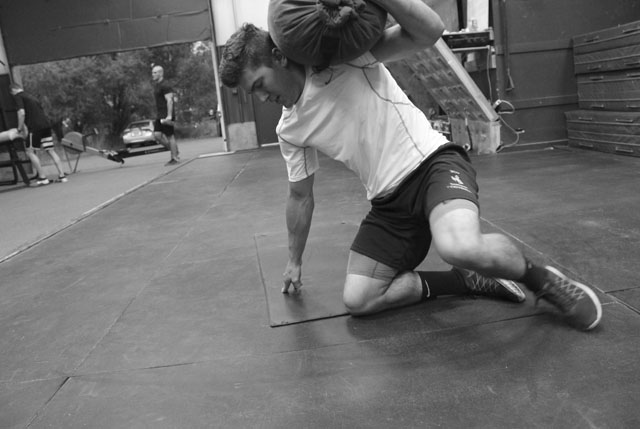By Jordan Smothermon
Programming for Mountain Athletes requires a well thought-out choice of exercises to meet their specific demands. These are my 5 favorite exercises for Mountain Athletes and here is why.
1. Pull-ups
Where there’s a strong back, there’s a strong athlete, and no other exercise fully works the back like pull-ups. Studies find correlations between pull-up ability and overall fitness, Eric Cressy cites a link between pulling ability and sprint speed (based on the fact that your legs follow your arms, so the faster and more powerfully you can pull your elbow back, the faster and more powerfully your legs will push into the ground). They train the lats as well as crucial stabilizers in the shoulder girdle. Done correctly, they train your body as one kinetic unit, from fingers to heels, along the back, around to the hip flexors, quads, and anterior calf muscles. Plus, they train your grip’s ability not only to hold on, but also to squeeze. And a strong grip is crucial to transferring power from any part of the body through the hands, an essential mountain attribute.
2. Back Squat
Want to get strong? Put a bar with plenty of weight on your back, squat until your butt won’t go any lower, and stand up. Voila. Back Squats do it all: train dorsiflexion, ankle stability, lower and upper hamstrings, quads (Lombard’s paradox), glutes, and the entire back, which should be tight from the traps to the tip of your coccyx. Want to run faster? Squat. Want stronger legs? Squat. Want a bombproof back? Squat. Nothing else trains strength like the back squat. Here’s a concrete example. Let’s say you have a 300# back squat and a 225# Front Squat. If you work at 90% of each, Front Squat won’t make you significantly stronger at Back Squat, but Back Squat – simply because you can lift more – will make you stronger at Front Squat. Additionally, it trains you to open your chest and pull your shoulder blades together, further supporting shoulder durability over the course of a long career.
3. Sandbag Get-ups
Not much needs to be said here if you’ve ever done a Sandbag Get-up. These things train your core in a way nothing else will, sure, but they also train – how to say this – the “between” muscles. The muscles in your body that are (often) neglected like those toys on the Island of Misfit Toys in that Rudolf the Red-Nosed Reindeer movie that comes on every Christmas. Additionally, each rep requires a lunge, so don’t think I’ve left out lunging – an essential movement to be sure. What is a Sandbag Get-up? It’s a flexion, rotation, isometric brace, and extension for your midsection. If you do them regularly, you’ll have one jacked island of toys, no longer neglected like misfits. In all seriousness, though, SBGUs build a strong midsection, which protects vulnerable limbs by allowing greater control over them, leading to career longevity and operational readiness throughout.
4. Campus Board Constant Movement
The gym isn’t the place for technique. It’s a place for strength. The crag is for technique. That’s why I’d put you on the Campus Board if I only could
do one thing to improve your climbing. Why? The campus board, especially constant movement, trains fingers, forearms, and the pump. There is no jug to bail out on. Want to lessen the load on your fingers? Better get every bit out of your feet on those little rungs. Training constant movement, you can also force yourself to make bigger and bigger moves. As you get pumped round to round, it will take more and more mental fitness to make those moves and hang on, just like the top of a route, when you’re pumped out of your mind and the next move is a big one…
5. Weighted Runs
Rarely in the mountains will you ever move over ground unloaded. If you work in the mountains, you never will, in a professional capacity. And moving over ground is the name of the game in the mountains. Weighted movement is the square to regular run training’s rectangle: a square is always a rectangle, but a rectangle isn’t always a square. In other words, weighted runs train unloaded running, but unloaded running doesn’t train weighted movement. One always transfers whereas the other one doesn’t always. Weighted running requires more of your back and legs, especially if you’re moving vertically. It increases ground reaction forces as well, increasing the strength and durability of your knees, ankles and feet more so than Step-ups due to the greater force applied eccentrically. Most mountaineers don’t have to run for speed, just a steady, all-day pace.
You Might Also Like Rob’s Top 5 Exercises for Mountain Athletes

